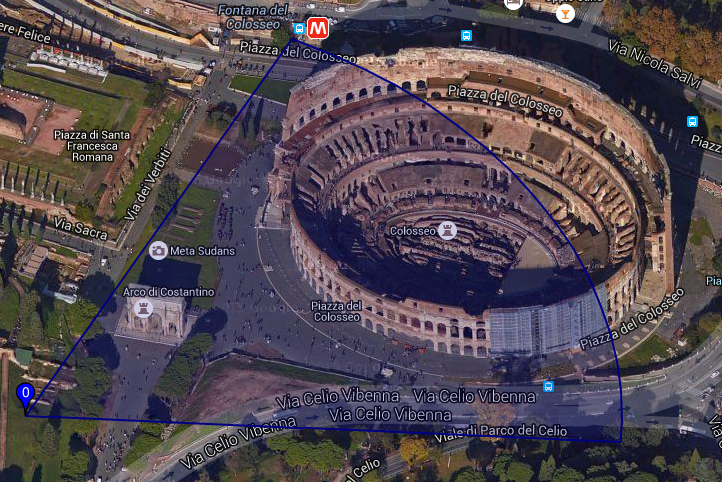
Photo Credit: Rachel Kramer Bussel (Last visit to Batch in West Village)
Of course this is not a cafe called Batch, only Spring Batch is here and there are no cupcakes nor espressos here, sorry for that.
If you’ve come this far, you have already read 51-Do you love Spring or hate it?, if not please do so.
In order to continue, knowing basic Spring, some annotations and Apache Maven is required, only then you may get the best of this post.
As I mentioned earlier, I need to process CSV files with sizes varying from 180 to 500 MBs. These files contain base stations and number of subscribers according to their
distances to the base station (I may sometimes use cell from now on) on an hourly basis. The aim is finding the area with the greatest number of subscribers by using these files.
At this point let’s talk about some GSM concepts very superficially:
Distances are calculated according to timing advance (TA) or propagation delay (PD). Both of them are very briefly the length of time a signal takes to travel between the base station and the mobile phone. Let’s also add that TA is for 2G and PD is 3G.
Let’s assume that blue marker 0 below identifies our 3G serving cell’s location. This cell has a beamwidth1 of 67o and the arc drawn in navy blue has a radius of 234 m. The people in this arc mostly have a PD of 0. Each PD value denotes a distance of 234 m; such as subscribers with PD 1 will be mostly between 234m and 468m to the serving cell. In order to draw this, azimuth of the cell is also required, which is 60o by the way; but I will tell about azimuth and beamwidth later, in another post.
For more details you can check this article.
The location of the 3G cell above is completely fictional.
Let’s return back to the csv files, below is a sample for 3G. As you can see, there is one line for every hour for a cell, meaning each cell contains 24 lines of data which should be accumulated before being used. Imagine the size of the file with more than 100K cells!
cell_id,data_time,pd0,pd1,pd2,pd3,pd4,...
15,23.02.2016 00:00:00,1200,2400,400,300,142...
15,23.02.2016 01:00:00,1000,2000,345,300,112...
15,23.02.2016 02:00:00,900,1700,245,300,92...
...
15,23.02.2016 23:00:00,1800,3500,487,400,162...
16,23.02.2016 00:00:00,800,2500,457,100,38...
...
For starters, here is the pom.xml, using not only Spring Batch but also Spring Boot which enables to code easier and faster after some learning curve.
<project xmlns="http://maven.apache.org/POM/4.0.0" xmlns:xsi="http://www.w3.org/2001/XMLSchema-instance"
xsi:schemaLocation="http://maven.apache.org/POM/4.0.0 http://maven.apache.org/xsd/maven-4.0.0.xsd">
<modelVersion>4.0.0</modelVersion>
<groupId>gokhan.java.spring.batch</groupId>
<artifactId>example</artifactId>
<version>0.0.1-SNAPSHOT</version>
<name>Batch Example</name>
<parent>
<groupId>org.springframework.boot</groupId>
<artifactId>spring-boot-starter-parent</artifactId>
<version>1.3.1.RELEASE</version>
<!-- <relativePath/> lookup parent from repository -->
</parent>
<repositories>
<repository>
<id>spring-releases</id>
<url>http://repo.spring.io/release</url>
<snapshots><enabled>true</enabled></snapshots>
</repository>
</repositories>
<pluginRepositories>
<pluginRepository>
<id>spring-releases</id>
<url>http://repo.spring.io/release</url>
<snapshots><enabled>true</enabled></snapshots>
</pluginRepository>
</pluginRepositories>
<dependencies>
<dependency>
<groupId>org.springframework.boot</groupId>
<artifactId>spring-boot-starter-cache</artifactId>
</dependency>
<dependency>
<groupId>org.springframework.boot</groupId>
<artifactId>spring-boot-devtools</artifactId>
</dependency>
<dependency>
<groupId>org.springframework.boot</groupId>
<artifactId>spring-boot-starter-batch</artifactId>
</dependency>
<dependency>
<groupId>org.springframework.boot</groupId>
<artifactId>spring-boot-starter-test</artifactId>
<scope>test</scope>
</dependency>
</dependencies>
</project>
Initial source codes are in gokhant@github.
When I first wrote it, I saw that processor runs for every line in the file, as I stated above, lines are related with each other.
I have to find a solution to merge the lines, but how? Stay tuned, coming up.
@Configuration
@EnableBatchProcessing
public class BatchConfiguration {
@Autowired
private StepExecutionListener stepListener;
@Autowired
private JobBuilderFactory jobFactory;
@Autowired
private StepBuilderFactory stepFactory;
public BatchConfiguration() {
}
@Bean
public ItemReader<Measurement> csvFileReader() {
FlatFileItemReader<Measurement> reader = new FlatFileItemReader<Measurement>();
reader.setResource(new ClassPathResource("sample_measurement.csv"));
return reader;
}
@Bean
public ItemProcessor<Measurement, Result> csvItemProcessor() {
return new Processor();
}
@Bean
public ItemWriter<Result> resultWriter() {
return new ResultWriter();
}
@Bean
public Job measurementProcessorJob(Step step, JobExecutionListener listener) {
return jobFactory.get("JobProcessMeasurement")
.incrementer(new RunIdIncrementer())
.listener(listener)
.flow(step)
.end()
.build();
}
@Bean
public Step step1(ItemReader<Measurement> reader, ItemWriter<Result> writer, ItemProcessor<Measurement, Result> processor) {
Step step = stepFactory.get("FirstStep")
.<Measurement, Result> chunk(1)
.reader(reader)
.processor(processor)
.writer(writer)
.listener(stepListener)
.build();
return step;
}
-
It is the angle between the edges (blue lines) of seving cell’s signal ↩

